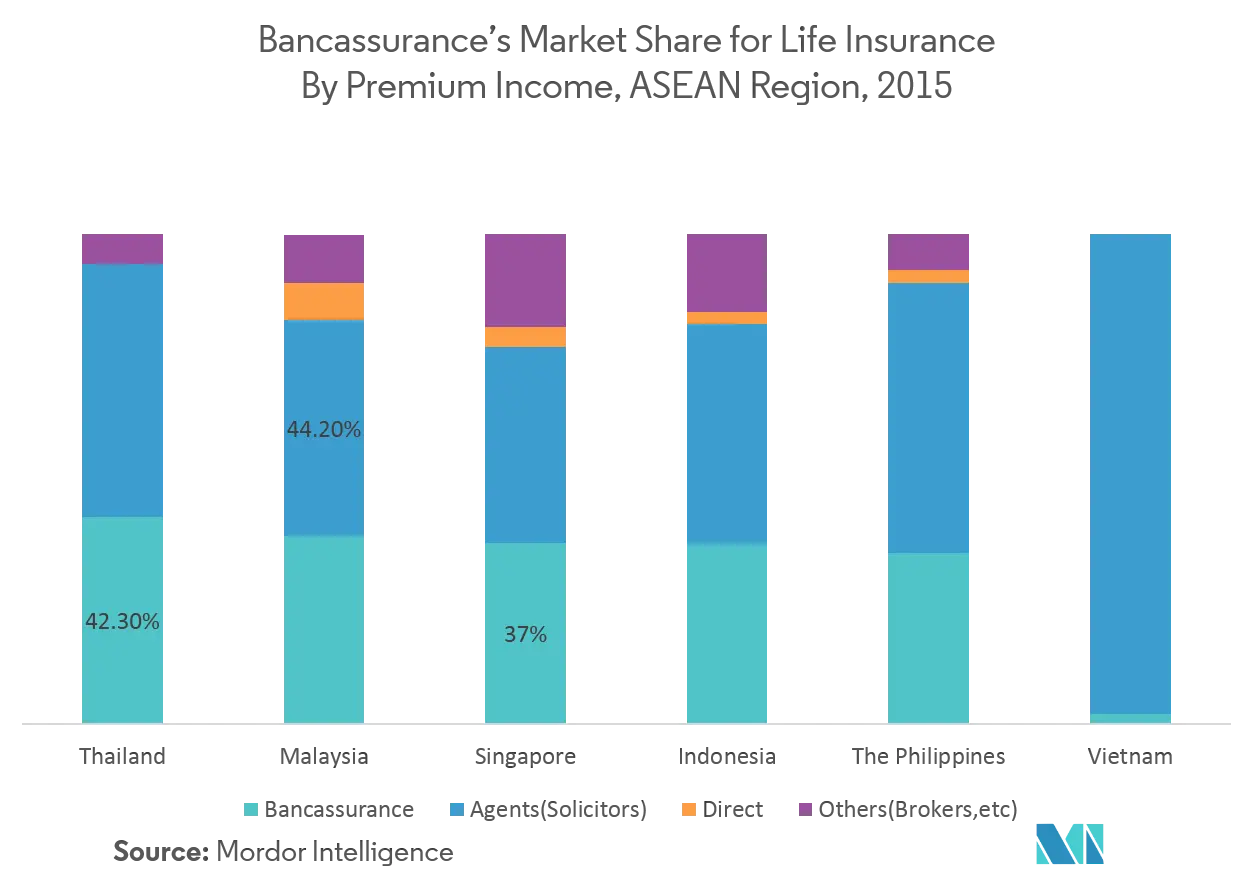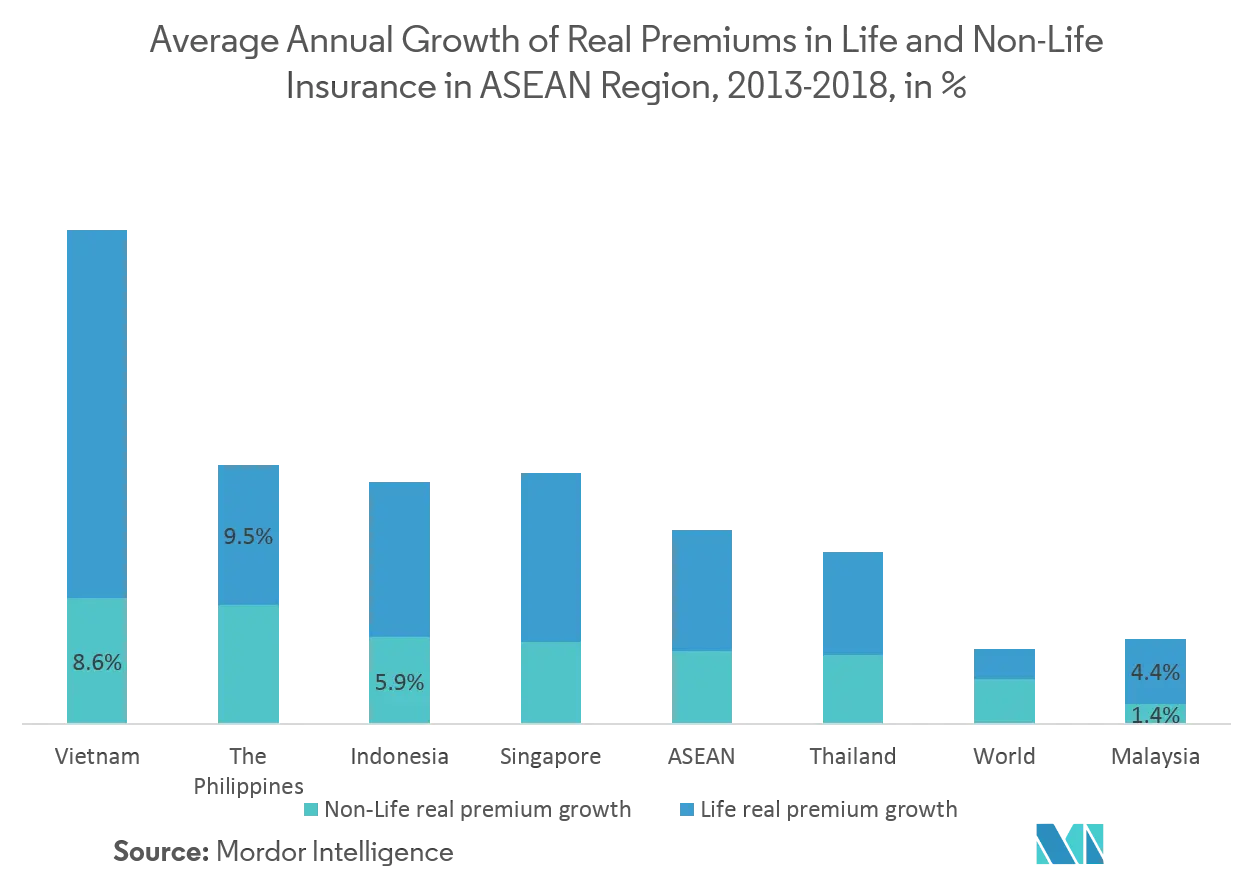Market Trends of Bancassurance in ASEAN Industry
This section covers the major market trends shaping the Bancassurance in ASEAN Market according to our research experts:
Significance of bancassurance as a distribution channel in ASEAN region
Multinational and domestic insurers are forming bancassurance agreements. In Singapore, Chubb insurance formed a bancassurance agreement with local bank DBS to gain access to the local distribution networks as well as to develop and test microinsurance products. Regulators in some markets are facilitating the shift to digital and direct. In Singapore, the approval of a full direct life insurance license to a well-capitalized InsurTech in 2017 was the first local insurer to win approval in nearly 50 years.
Despite the increasing importance of digitization, the majority of the players have been spending 1 to 2% of their gross premiums annually towards the digital front (in addition to the general IT spending) and this share is expected to increase in the future in a more strategic manner. Hybrid strategies are gaining popularity which is combining proprietary concerns with some sort of external collaboration. The main short-term attraction for digitization is cost-saving because the cost of acquisition i.e., commission fees can reach up to 20% of gross premiums in some ASEAN countries. In the case of bancassurance, which is more prevalent in life than non-life, no insurer offers customized products, which limits their opportunities to increase penetration.

Impact of life insurance on the insurance value chain of the region
ASEAN region’s three largest insurance markets – Singapore, Thailand, and Indonesia account for almost 3/4th of the total ASEAN premiums written (both life and non-life) in 2018. Bancassurance has seen sound development in the region. In Thailand, Singapore, The Philippines, Malaysia and Indonesia, the bancassurance market share is the second-largest and competes with agents’ market share.
At a share of 71% in total premiums, Life insurance plays a prominent role in the ASEAN region. In life insurance, the traditional channels remain dominant distribution channels in mature markets like Singapore, but in developing markets like Malaysia and Indonesia, digital channels are becoming more prominent. With a considerably lower growth rate than the worldwide average in terms of premiums written, non-life insurance players tread very carefully when going ahead with a distribution channel in the region.
There is no doubt to say that agents remained as the main distribution channel in the region, but some market sources indicate the distribution share might converge at 50% bancassurance, 30% agents and 20% other channels in the future. Despite the digital wave, hybrid strategies may likely defend this distribution model and help the insurers provide an omni-channel experience to the customers.


